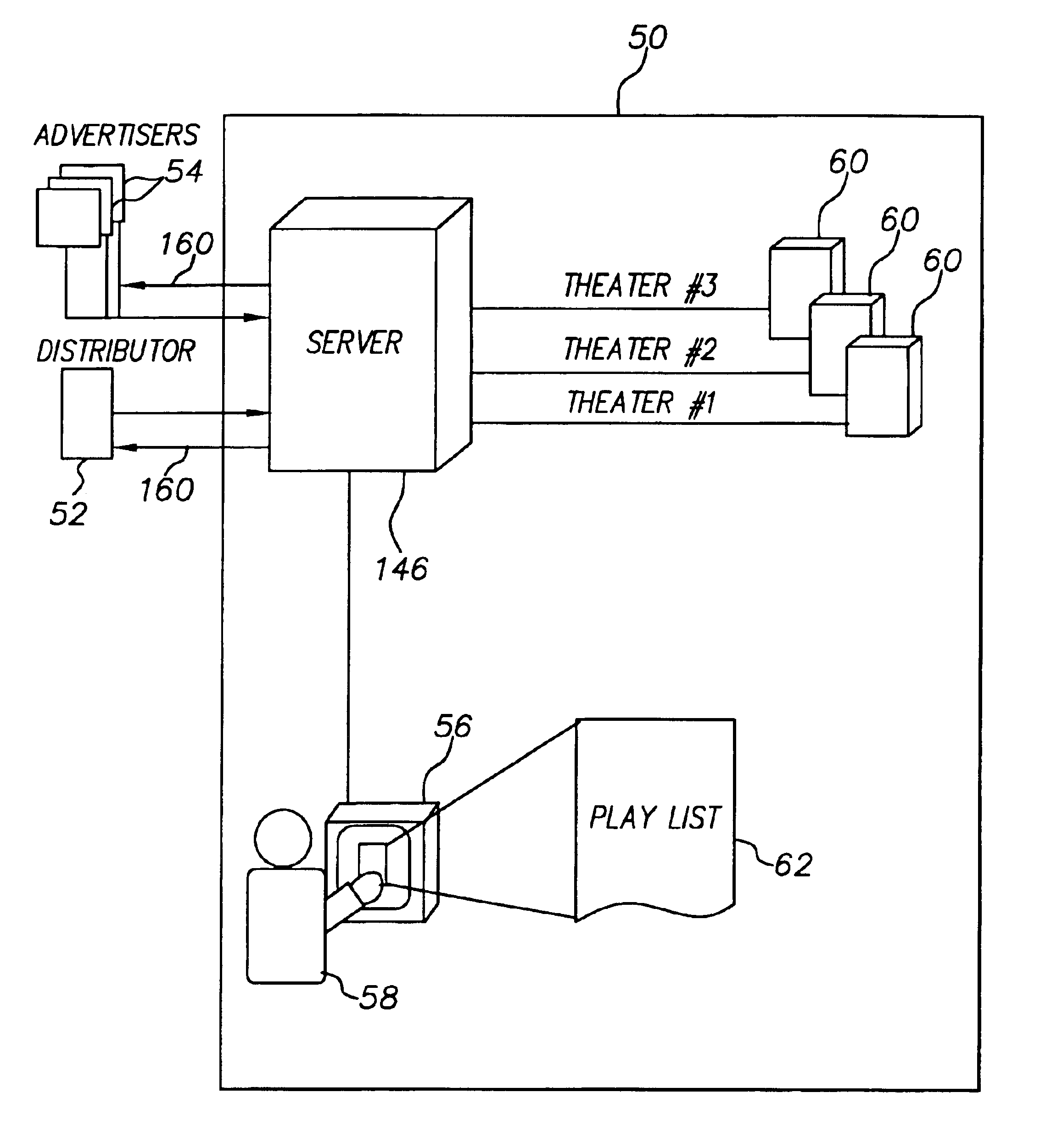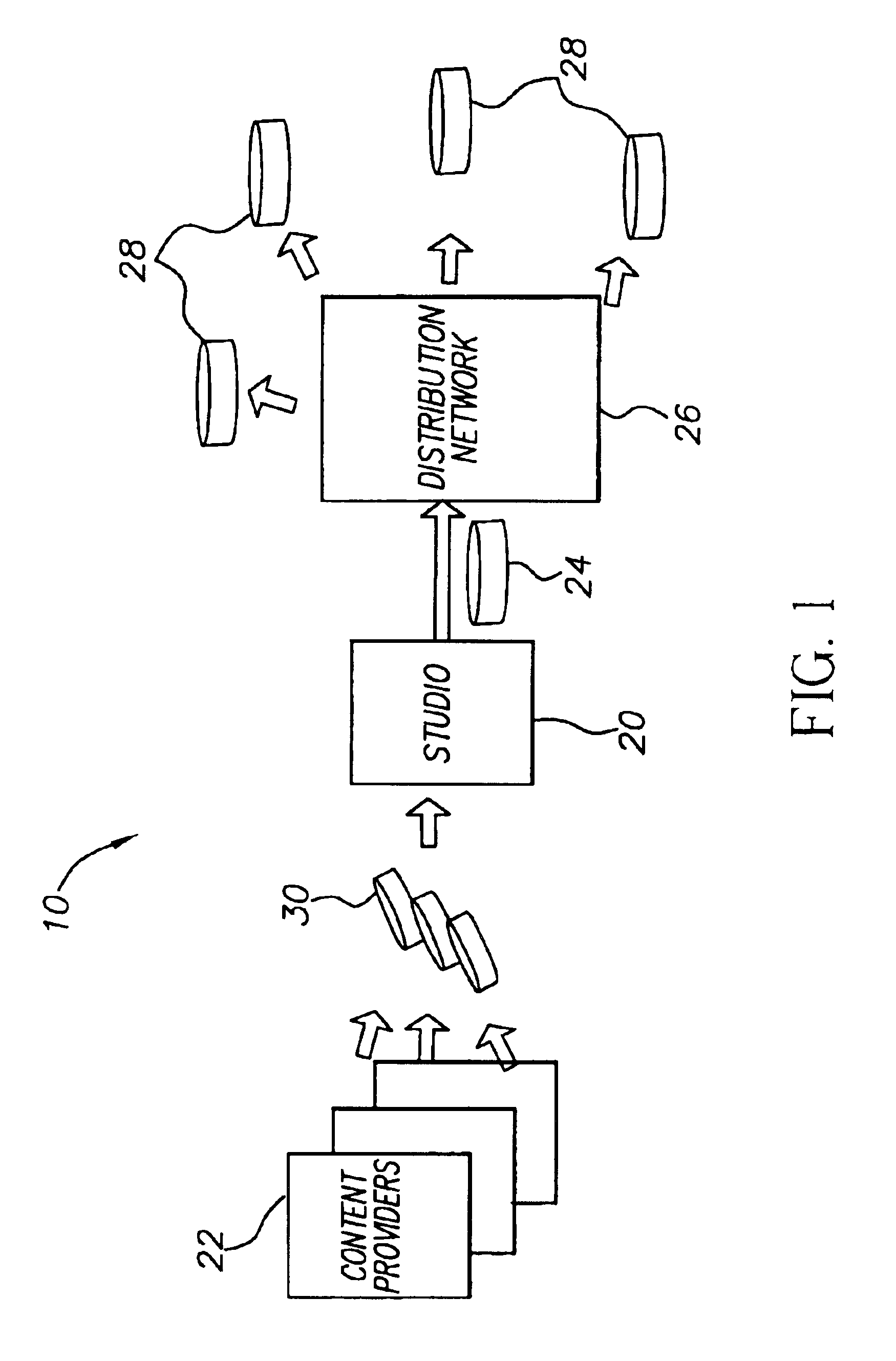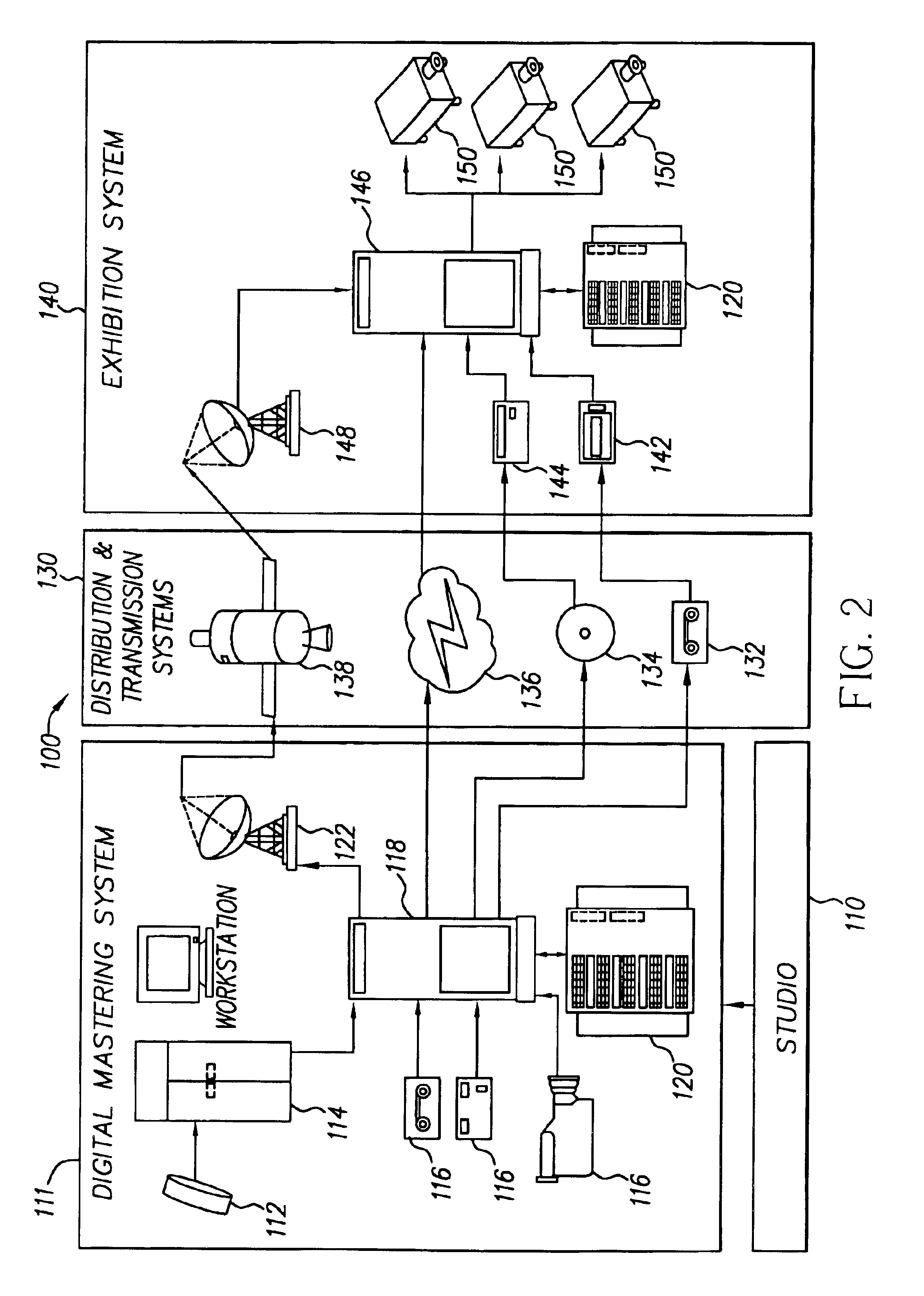Method for staging motion picture content by exhibitor
a technology for motion picture content and exhibitor, applied in the field of digital motion picture presentation, can solve the problems of limited flexibility available for adapting to audience, statistically calculated metrics available, and no feedback channel for making any accurate measurement of audience demographics, and achieve the effect of increasing advertising revenues
- Summary
- Abstract
- Description
- Claims
- Application Information
AI Technical Summary
Benefits of technology
Problems solved by technology
Method used
Image
Examples
Embodiment Construction
[0034]The present description is directed in particular to elements forming part of, or cooperating more directly with, apparatus in accordance with the invention. It is to be understood that elements not specifically shown or described may take various forms well known to those skilled in the art.
[0035]Referring to FIG. 3, there is shown an arrangement of components at an exhibitor site 50. Cinema operating system 146 acts as the server for receiving the digital image data stream for a motion picture feature, as was described with reference to FIG. 2. A distributor 52 provides the motion picture feature. Advertising and promotional content may also be provided as a digital data stream, both from distributor 52 and from one or more advertisers 54. Advertisers 54 may be, for example, advertising agencies or buyers whose function is to strategically place ads for their clients.
[0036]On a control console 56, an operator 58 stages the scheduling of motion picture feature and promotional...
PUM
 Login to View More
Login to View More Abstract
Description
Claims
Application Information
 Login to View More
Login to View More - R&D
- Intellectual Property
- Life Sciences
- Materials
- Tech Scout
- Unparalleled Data Quality
- Higher Quality Content
- 60% Fewer Hallucinations
Browse by: Latest US Patents, China's latest patents, Technical Efficacy Thesaurus, Application Domain, Technology Topic, Popular Technical Reports.
© 2025 PatSnap. All rights reserved.Legal|Privacy policy|Modern Slavery Act Transparency Statement|Sitemap|About US| Contact US: help@patsnap.com



